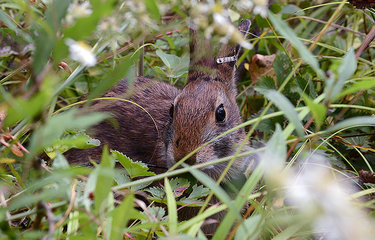DEC reviews plans to create young forests in Knox
KNOX — The New York State Department of Environmental Conservation will establish 38 acres of young forest habitat at the Margaret Burke Wildlife Management Area in Knox.
About a half-dozen people attended a meeting Tuesday at the Thacher Park Center. Four were not Knox residents, but members of hunting clubs like the Woodlawn Sportsmen Club in Schenectady and the Locust Ridge Retrievers in Clifton Park.
The Margaret Burke Wildlife Management Agency, or WMA, is off Route 156 on Pleasant Valley Road, and is open to the public for activities like hunting or bird-watching, DEC spokesman Rick Georgeson said.
Somewhere between a field and a forest, young forests are made up of tree saplings, vines, shrubs, and grasses. Created after a mature forest of fully-grown trees is destroyed, these habitats are between zero and 10 years old.
Young forests have been declining since the 1950s, while mature forests have been on the rise since the 1900s. The concern is that, without humans preventing natural causes from destroying forests, young forests will be edged out by mature forests and not provide the habitat needed by many species.
According to Selinda Brandon, a DEC wildlife biologist, there are over 100 species of animals which commonly use young forest habitats, some depend on this habitat such as the golden-winged warbler, the white-tailed deer, the New England cottontail, and the wild turkey. Other species, like the bobcat or black bear, may not primarily live there, but use the habitat. Species that will be monitored in Knox include the American woodcock, the wild turkey, and the ruffed grouse.
Part of DEC’s Young Forest Initiative, the plans for the 244.4 acres of preserved land in Knox involve managing 16 percent of the land as young forest, 11 percent as grasslands, 5 percent as shrublands, 5 percent as wetlands, and 58 maintained as mature forests.
Creating these habitats will involve clear-cutting some forested areas and mowing fields. The clear-cut areas would be left mostly on their own to regrow into young forest habitats within five to 10 years. The plan for the WMA is meant to take about a decade.
Loggers will be contracted by DEC to clear-cut certain areas.
Clifford Barber, an owner of an adjacent farm, asked if the tops of trees would be left behind after clear-cutting.
“It’s going to be a mess if you just leave them,” he said.
“A mess is actually good,” said Brandon, explaining that the tree tops would provide food and cover for species like deer.
Jeff Unser, of the Woodlawn Sportsmen Club, told The Enterprise after the meeting that he was excited to see young forests being created at the preserve, saying it would provide habitats for animals to be hunted at the WMA.


